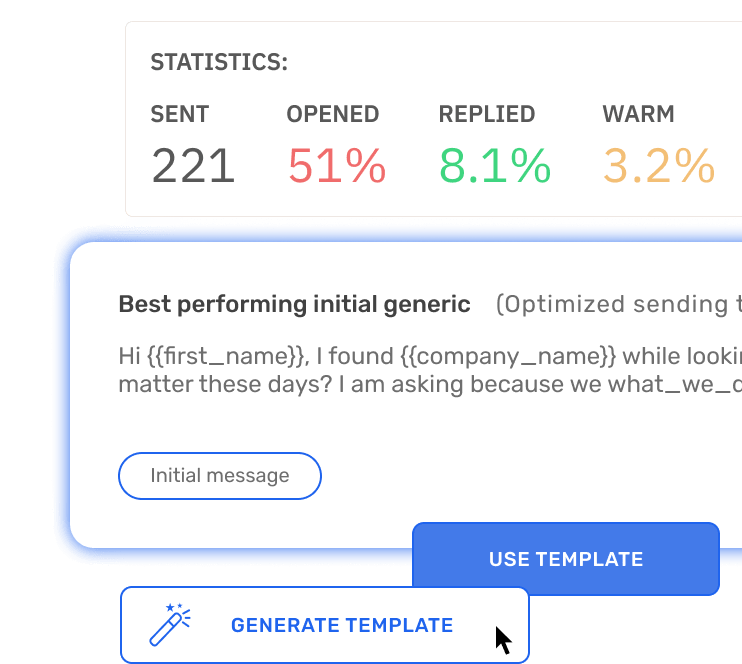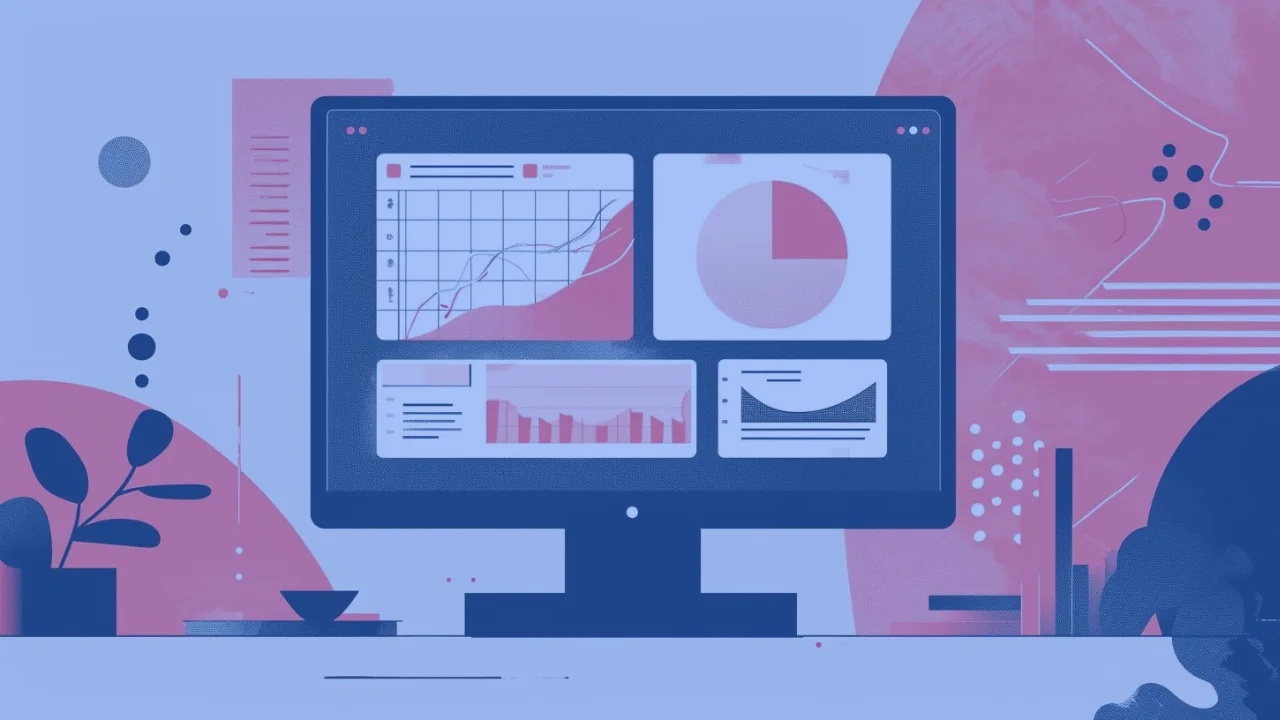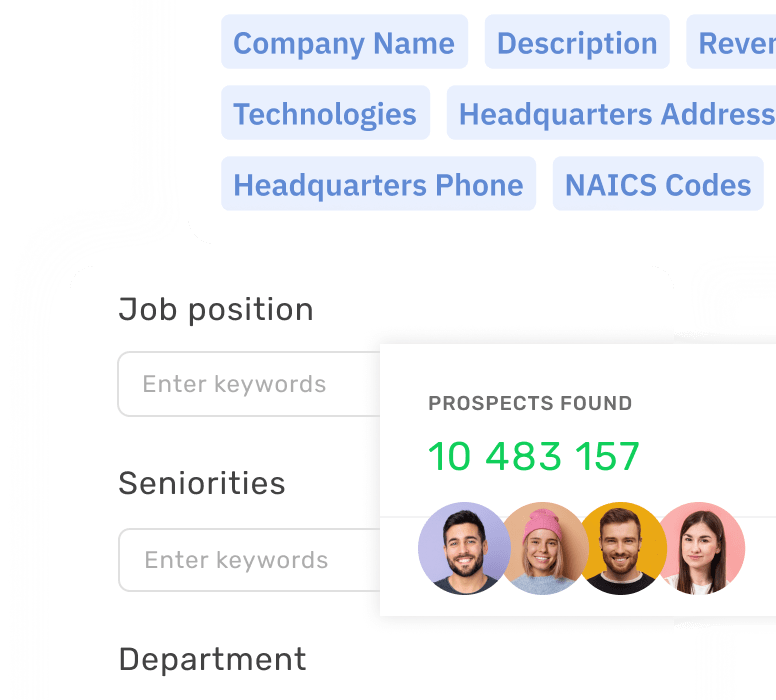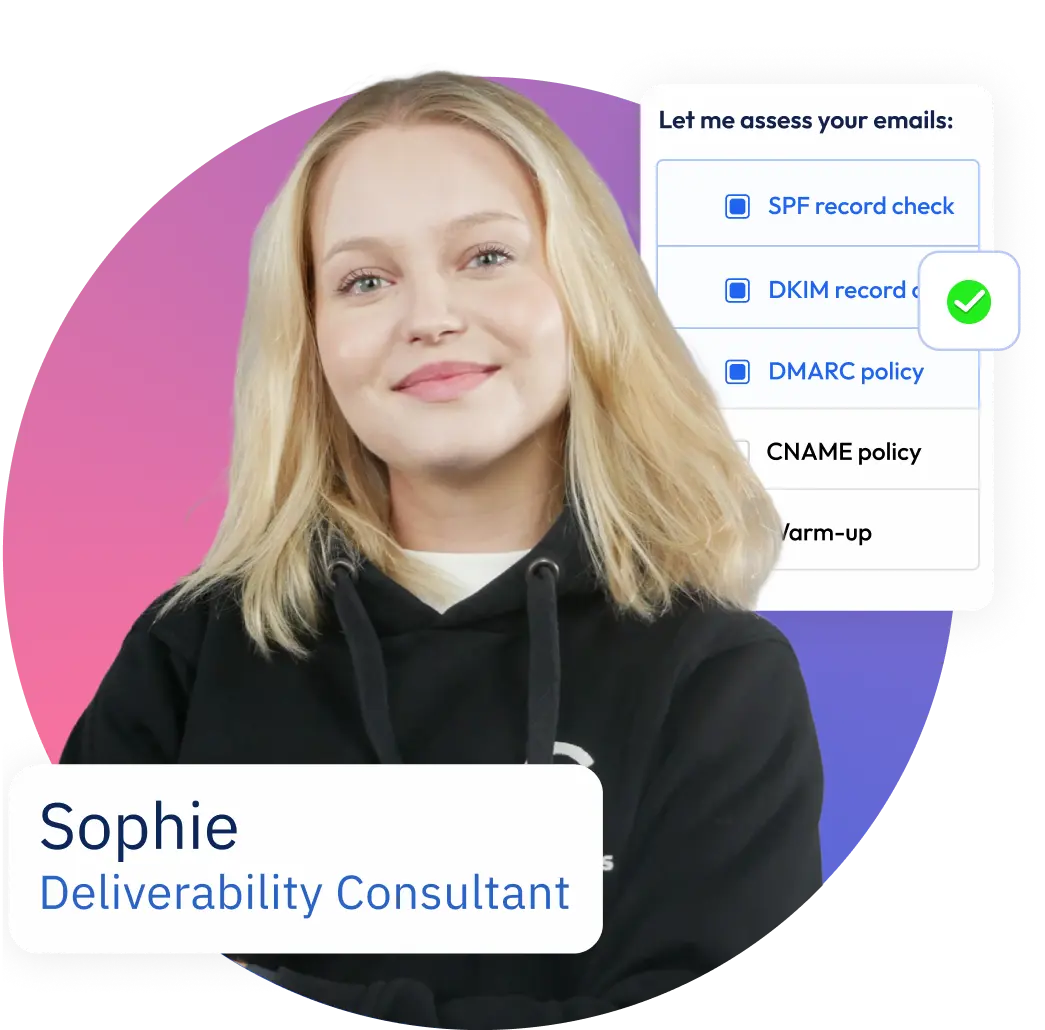Key Takeaways
- Cold email analytics are crucial for evaluating the performance and effectiveness of email outreach strategies, assisting businesses in refining their approaches and making data-driven decisions.
- Fundamental metrics such as open rate, click-through rate, response rate, conversion rate, and bounce rate provide valuable insights into the health and effectiveness of cold email campaigns.
- Email engagement metrics, which include time spent reading and forward rate, offer a clearer understanding of how recipients interact with content.
- The selection of analytics tools can significantly impact the success of cold email campaigns, with features like real-time analytics, automated reporting, integration, and A/B testing contributing to higher productivity and better outcomes.
- Improving conversion rates hinges on strategies such as personalization and clear calls-to-action, which encourage recipients to take the desired actions after engaging with an email.
- Managing unsubscribe rates is critical for maintaining a healthy subscriber list and requires optimizing email frequency and content relevance as well as utilizing feedback from unsubscribe surveys.
- Optimizing response times through the timing of emails and the clarity of calls-to-action can improve the likelihood of timely recipient engagement.
- Maintaining a low bounce rate is essential for sender reputation and can be achieved through regular email list maintenance and verification services.
- Calculating the ROI of cold email campaigns involves comparing the revenue generated from these campaigns to the costs, providing a measure of their financial effectiveness.
- A/B testing is key for optimizing cold email content and strategies, enabling businesses to make data-backed decisions on what elements resonate best with their audience.
- The click-to-open rate (CTOR) measures the effectiveness of email content and can be improved by offering relevant content with compelling calls-to-action.
- Effective list management and the use of behavioral metrics can enhance the targeting and relevance of cold emails, leading to higher success rates.
- Personalizing cold email messages can increase both open and response rates by making each email feel more relevant and tailored to the recipient.
- Segmenting the audience based on criteria such as industry, job role, or engagement history allows for more targeted and effective messaging, potentially leading to improved campaign results.
- Identifying patterns in campaign data helps predict outcomes and tailor cold email strategies, while benchmarking against industry standards provides valuable context for evaluating campaign success.
- Enhancing cold email metrics requires continual processes of measurement, analysis, refinement, and the incorporation of user feedback.
- Advanced analytics, including predictive behavior and AI-driven personalization, can significantly improve the relevance and impact of cold emails.
Reach More with Less Effort
Connect with Potential Clients at scale
- AI message generator
- E-mail verification
- Multichannel sequences
- A/B testing
Key Metrics for Tracking Cold Email Success
Metrics serve as the north star for evaluating the success of cold email campaigns. Understanding these key performance indicators (KPIs) is essential in gauging the health and effectiveness of outreach initiatives. These fundamental metrics provide a starting point for analysis, but a thorough understanding of engagement goes beyond these numbers. Various other factors, such as email deliverability and bounce rates, also play a vital role in a campaign’s success.Cold Email Key Metrics Table
| Metric | Description |
| Open Rate | The percentage of recipients who open an email. |
| Click-Through Rate | The percentage of recipients who clicked a link within an email. |
| Response Rate | The percentage of recipients who reply to an email. |
| Conversion Rate | The percentage of recipients who take the desired action. |
| Bounce Rate | The percentage of emails that were not delivered. |
Understanding Email Engagement Metrics for Cold Email Analytics
Email engagement metrics are about gauging the recipient’s interest and interaction with content. Engagement metrics give a clearer picture of how cold emails resonate with potential clients.Crucial engagement metrics include:- Time Spent Reading: This metric indicates the level of interest a recipient has in content.
- Forward Rate: If emails are being forwarded, that’s a positive sign that recipients find the content valuable enough to share.
81% of all emails are now opened and read on mobile devices, highlighting the growing importance of mobile optimization in cold email campaigns.
Source: SuperOffice.com
Tools for Tracking and Analyzing Cold Email Metrics
Selecting the right tools to track and analyze cold email metrics can make a significant difference in the success of campaigns. With the plethora of software options available, it’s vital to choose platforms that offer comprehensive analytics and user-friendly interfaces. These tools often provide dashboards that display insightful data which can be used to make informed decisions for campaign optimizations.From open rates to detailed click maps, the right tool will give a clear view of performances across various campaigns. For instance, Growbots provides detailed campaign analytics, integrated with email sending features, allowing for streamlined campaign management and monitoring.| Feature | Benefit |
| Real-Time Analytics | Enables immediate reaction to campaign performance. |
| Automated Reporting | Streamlines reporting and reduces manual work. |
| Integration | Seamless workflow with existing tools and platforms. |
| A/B Testing | Facilitates experimentation with different email elements. |
Improving Conversion Rates
Conversion rates are the lifeline of any marketing campaign, and in the context of cold emails, they refer to the actions that recipients take after engaging with an email. Improving conversion rates means encouraging more recipients to take the desired action, be that scheduling a demo, signing up for a service, or making a purchase.| Conversion-boosting Strategy | Impact |
| Personalization | Tailoring emails to the recipients increases relevance and impact |
| Clear Call-to-Actions | Direct and concise CTAs guide recipients towards conversion |
Studies have shown that personalizing subject lines can boost response rates by 30.5%, as recipients are more likely to engage with content that appears tailored to their interests.
Source: backlinko.com
Managing Unsubscribe Rates
High unsubscribe rates can be alarming, as they indicate disinterest or annoyance. It’s crucial to regularly monitor and manage this metric to maintain a healthy subscriber list. Strategic email frequency and content relevance are key to keeping unsubscribe rates low. Provide value in every email, and give recipients a reason to stay subscribed.Implement tactics such as segmentation and personalization to ensure content is directed appropriately, thus potentially reducing the likelihood of recipients unsubscribing. Learning from feedback obtained through unsubscribe surveys can also play a crucial role in developing better outreach strategies.Goals and Strategies to Manage Unsubscribe Rates Table
| Goal | Strategy |
| Reduce Unsubscribes | Optimize sending frequency and content relevancy. |
| List Health | Remove inactive users to maintain a clean list. |
| Feedback Loop | Implement exit surveys to understand why subscribers leave. |
Optimizing Response Times
Quick responses to emails are often viewed as a measure of a company’s attentiveness and customer service. But when discussing response times in the realm of cold email analytics, it reflects the rapidity with which potential leads react to outreach. Streamlining the follow-up process and timing emails can significantly improve response times, thus enhancing the chances of successful engagement.| Element | Impact on Response Times |
| Timing | Optimal send times lead to quicker responses. |
| Follow-Ups | Regular, not overly frequent, follow-ups prompt timely replies. |
| Clarity | Clear calls-to-action result in straightforward responses. |
Analyzing Bounce Rates
Bounce rates are indicative of how many cold emails are not reaching the intended recipient. High bounce rates can hurt a sender’s reputation and reduce the overall effectiveness of a campaign. To maintain a low bounce rate, ensure email lists are clean, updated, and verified.Utilizing services like email verification can help reduce these rates by eliminating invalid addresses from lists:- Hard bounces signify non-existent or invalid email addresses and should be removed immediately.
- Soft bounces may result from temporary issues and need to be monitored for pattern recognition.
Calculating ROI of Cold Email Campaigns
The Return on Investment (ROI) of cold email campaigns is a concrete metric to demonstrate the value of outreach efforts. Calculating ROI involves measuring the direct revenue generated from cold emails against the cost of running these campaigns — from software tools to personnel costs.Here’s a simplified ROI calculation framework:| Metric | Description |
| Revenue Gained | The total amount earned from the campaign outcomes. |
| Cost of Investment | The sum of all associated campaign expenses. |
Other cold email campaign ROI calculation factors
| Factor | Consideration |
| Revenue Attribution | Trace revenue back to specific email campaigns. |
| Cost Analysis | Account for all expenditures related to the campaign. |
| Long-term Value | Factor in the lifetime value of acquired customers. |
no prior experience & time required
Find your winning outbound formula with Concierge
- 95% activities on our behalf
- Avoid in-house SDR hire
- Learn & Take over anytime
- Numerous A/B tests
A/B Testing for Cold Email Optimization
A/B testing, or split testing, involves sending two variations of an email to different segments of an audience to determine which performs better. This scientific approach can reveal what resonates best with an audience, from subject lines to email body content:- Testing Variable: Whether it’s CTA placement, email length or tone, track one change at a time.
- Segmentation: Ensure testing groups are equivalent to avoid skewed results.
Research shows that A/B tests produce a significant change in 1 out of 8 cases, highlighting the impact of experimenting with different elements of cold email campaigns.
Source: invespcro.com
Improving Click-to-Open Rates
The Click-to-Open Rate (CTOR) is a key metric measuring the effectiveness of an email’s content. It’s the percentage of recipients who, after opening the email, also clicked through on a link. Improving this rate demonstrates that not only was the subject line compelling enough to prompt an open, but the content delivered on its promise and incited action.- Relevant Content: Delivering high-value content encourages clicks.
- Compelling CTAs: A call-to-action that resonates with the reader boosts engagement.
Tips to Improve Email Performance Table
| Tip | How it Improves Email Performance |
| Compelling Headlines | Increases likelihood of clicks. |
| Relevant Links | Encourages interaction with content. |
| Clear Value Proposition | Motivates to take the next steps. |
Effective List Management Metrics
Effective list management is crucial for maintaining the quality and effectiveness of cold email marketing efforts. Metrics such as list growth rate, spam complaint rate, and engagement over time are essential for evaluating the health of an email list. Engage in regular list hygiene practices to remove inactive subscribers and prioritize nurturing leads that show interest.- List Health Score: Periodically evaluate a list’s overall engagement and clean it accordingly.
- Re-engagement Campaigns: Target inactive subscribers with campaigns to reignite their interest.
Behavioral Metrics in Cold Email
Delving into behavioral metrics sheds light on recipient actions after opening an email. These metrics embody the subtleties of user interaction, from how long they spend reading a message to whether they move it to a folder or mark it as important.- Engagement Over Time: Analyzing how engagement changes with subsequent emails to the same recipient can inform the frequency and content of future correspondence.
- Sequence Drop-off: Identifying at which email in a sequence recipients stop engaging provides insight into content relevance and timing.
Optimizing Send Times
The timing of cold emails can have a significant impact on their open and engagement rates. Optimizing send times involves understanding when a target audience is most likely to read and respond to emails. This can vary widely depending on factors like industry, time zone, and even the day of the week.Optimal Send Times by Audience Segment Table
| Audience Segment | Suggested Send Time |
| Professionals | Early morning or late afternoons on weekdays |
| International Audiences | Time zone adjusted evenings |
| Industry Specific | Varied based on audience interactions |
Personalizing Your Cold Email Messages
Personalization is a powerful tool in the realm of cold emailing. Tailoring a message to the recipient demonstrates that you have done your homework and understand their needs and challenges. It can significantly increase open and response rates by making each email feel like a one-to-one conversation rather than a broadcast to a faceless crowd.- Dynamic Content: Incorporate details specific to the recipient or their company for a personalized touch.
- Segmentation: Use relevant data to divide an audience into groups based on shared characteristics for more targeted messaging.
Optimizing Email Frequency
Determining the optimal frequency for sending cold emails is a delicate balance between maintaining visibility and avoiding email fatigue. There is no one-size-fits-all answer, but by analyzing engagement metrics and feedback, you can tailor email cadence to match your audience’s preferences.Impact of Different Frequencies on Email Engagement Table
| Frequency | Impact |
| High | Potential increase in unsubscribes |
| Low | May lead to lower brand recollection |
| Optimal | Balanced engagement without fatigue |
Segmenting Your Audience for Better Results
Segmentation is the process of dividing an email list into smaller groups based on specific criteria such as industry, job role, or past engagement. By segmenting your audience, you can send more targeted and relevant content, which can lead to:- Higher Engagement: Tailored messages resonate better, increasing engagement metrics.
- Improved Conversion Rates: Relevance typically leads to higher conversion rates as the message aligns closely with the recipient’s needs.
Benefits of Different Segmentation Strategies Table
| Segmentation Strategy | Benefit |
| Industry Specific | Tailored content that resonates with industry challenges. |
| Job Role | Content that speaks directly to the pain points of specific roles. |
| Interaction History | Messages that build upon previous engagement. |
Identifying Trends and Patterns
Identifying trends and patterns in cold email analytics allows you to predict future outcomes based on past behavior. This can include recognizing the types of subject lines that get the most opens or the content that generates the highest click-through rates.| Trend/Pattern | Insight Gained |
| Seasonal Changes | Understanding how time of year affects engagement |
| Industry Shifts | Tailoring your approach to industry-specific trends |
Benchmarking Against Industry Standards
Benchmarking cold email campaigns against industry standards provides a frame of reference for evaluating success. Understanding how metrics stack up against those of peers can highlight areas for improvement.Access to industry benchmarks can come from:- Research Reports: Industry-specific reports often contain valuable benchmarking data.
- Competitor Analysis: Watching competitors can give clues about industry norms.
Enhancing Your Cold Email Metrics
Proactive enhancement of cold email metrics is an ongoing process that requires a cycle of measurement, analysis, and refinement. Augmenting these metrics involves not only leveraging the right tools but also cultivating a culture of continuous improvement.Strategies for enhancing cold email metrics:- Iterative Testing: Consistently test different elements of your emails, from subject lines to signature blocks.
- User Feedback: Use surveys or direct communication to gather recipient feedback, which can provide actionable insights for improvement.
leave no lead unexplored
Every potential client within reach
- 180m+ contacts
- CRM integrations
- 23 Prospect filters
- 15 Company filters
Advanced Analytics for Personalization
Advanced analytics go beyond basic metrics; they delve into predictive behavior, sentiment analysis, and AI-driven personalization. By drawing on complex data sets and sophisticated analysis techniques, marketers can craft exceptionally relevant content that speaks directly to the needs and interests of each recipient.Advanced analytics enable:- Predictive Scoring: Anticipating lead behavior based on past interactions.
- Hyper-personalized Content: Generating email content that adapts to the individual, based on collected data points.




































